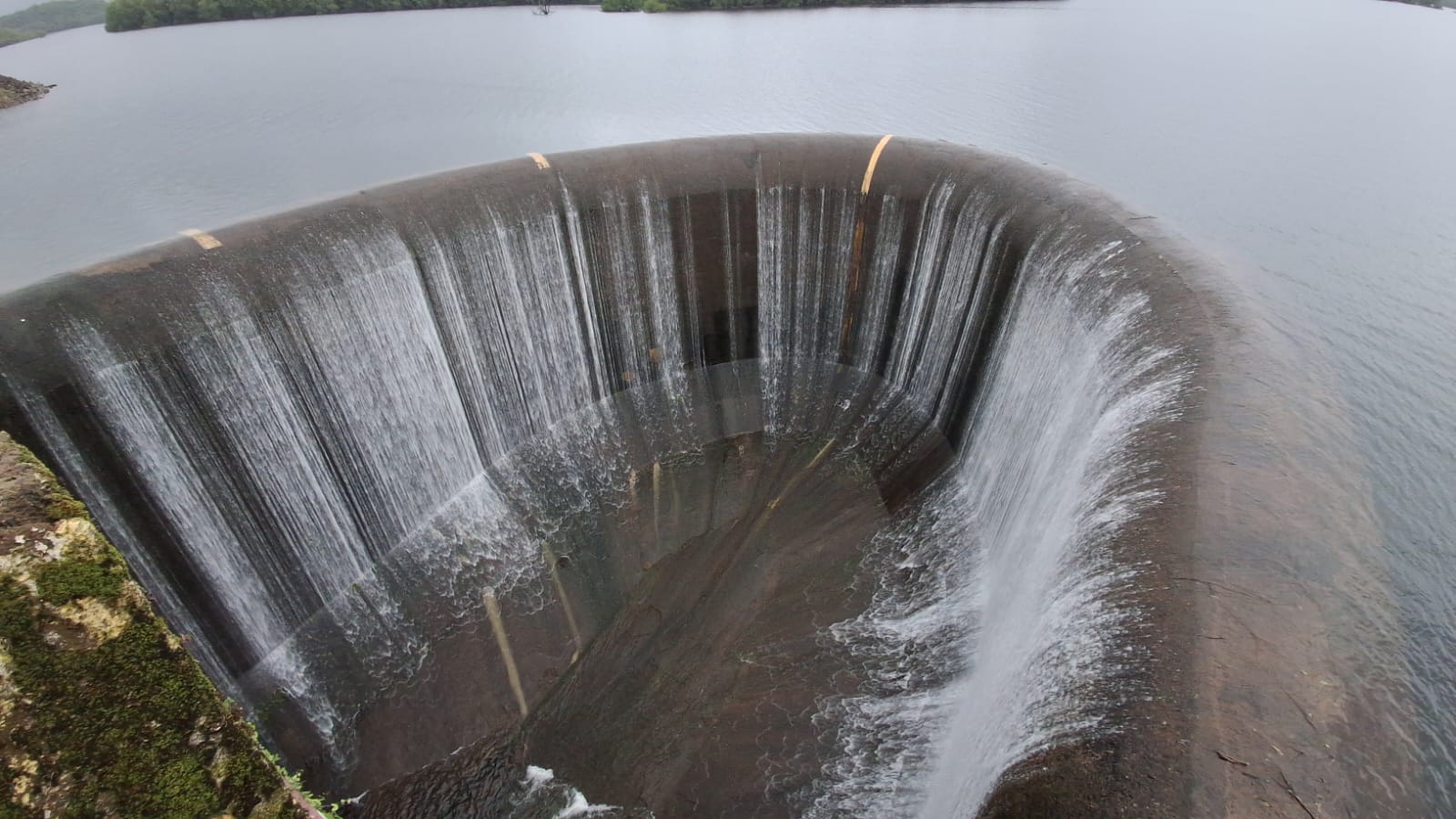
Water cascades over Selaulim’s spillway as reservoir reaches capacity on Wednesday evening.
MAPUSA
The Selaulim reservoir, South Goa’s largest and most crucial water source, began overflowing on Wednesday evening – nearly 12 days ahead of last year – following the early onset of the southwest monsoon this year.
The monsoon, which typically arrives in Goa around June 5, made its entry on May 25 this year, bringing sustained rainfall to the catchment areas. As a result, the Selaulim dam reached its full capacity well ahead of its average overflow date of July 7.
“This is one of the earliest overflows we’ve recorded in recent years,” said a senior engineer from the Water Resources Department (WRD), adding that early rains had significantly recharged both major and minor reservoirs in South Goa.
The smaller Gaunem reservoir in Canacona was the first to overflow this season, on June 19. WRD officials say this year’s early filling of reservoirs bodes well for irrigation, drinking water supply, and groundwater recharge in the region.
Selaulim, located in Ugem-Sanguem, plays a vital role in supplying raw water for treatment to most parts of South Goa.
Its hallmark feature – a duckbill spillway – adds to its engineering distinction. The uniquely designed spillway automatically begins to release excess water once the reservoir reaches full capacity, allowing for a controlled overflow.
“The duckbill spillway is engineered to handle a maximum flood discharge of 1,450 cubic metres per second. The surplus water flows downstream into the Selaulim river, aiding irrigation and replenishing rural water sources,” a WRD official explained.
As in previous years, the spectacle of water cascading over the spillway has begun drawing locals and tourists alike, despite the monsoon showers. Visitors often gather near the dam to witness the powerful and picturesque overflow – a seasonal attraction for the region.
The WRD has advised visitors to follow safety instructions and avoid getting too close to the spillway structure due to slippery conditions during the rains.